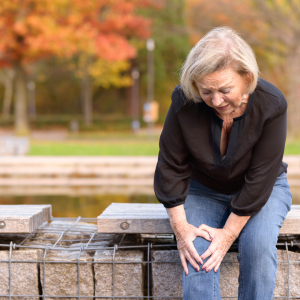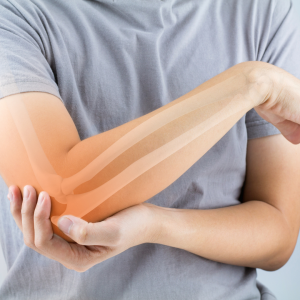David Dines, MD, is an orthopedic surgeon who has built his practice based on decades of clinical experience and research focusing on the shoulder and related injuries. He is the Medical Director for the ATP World Tennis Tour and has operated on thousands of shoulders throughout his career while publishing many of the most important research articles and textbooks on shoulder surgery.
Joshua Dines, MD provides a full range of Sports Medicine services, including surgical and non-surgical treatments for injuries to the shoulder, knee, and elbow. He works with the NY Mets and NY Rangers as well as college athletes, high-school athletes, weekend warriors, and those patients just looking to get back to performing their everyday activities without pain. Together, Dines Orthopedics offers offices in two convenient locations in New York City at Hospital for Special Surgery and in Uniondale Long Island, offering their patients surgical and non-surgical options in both locations.
Dines Orthopedic provides a broad range of highly specialized Orthopedic Sports Medicine Services. Our team will properly evaluate and treat sports-related and chronic conditions affecting the elbow, knee, and shoulder. Sports injuries are often a result of overuse and wear and tear. Our team works with recognized professional athletes to provide high-quality care.
When surgery is required, you can trust that you are in the right hands at Dines Orthopedic. Our surgeons have performed thousands of procedures and improved the lives of countless patients through our comprehensive care.
Request An Appointment
Treating Golfers Elbow: Orthopedic Surgeon UES NYC
Millions of Americans experience some form of elbow injury every year. Dines Orthopedics offers treatment for many of these injuries with our Orthopedic Surgeon UES NYC. We can treat your elbow injury and help you get back to doing what you love. Elbow injuries are frequent among athletes and can be debilitating depending on your sport. For golfers developing an elbow injury could mean weeks staying off the course for weeks. If you believe you have developed golfers elbow contact Dines Orthopedics today.
One of the most common injuries our Orthopedic Surgeon UES NYC treats is medial epicondylitis, also known as golfers’ elbow. People who suffer from medial epicondylitis experience pain in the inner aspect of the elbow. They may also experience pain or weakness in their wrist flexion and forearm pronation. Medial epicondylitis can also affect your daily activities, such as pouring a drink or shaking someone’s hand.
Although the name could give off the impression that it only affects golfers, it can happen to anyone who overuses their forearm. Tennis players are prone to getting medial epicondylitis rather than lateral epicondylitis. For golfers, medial epicondylitis occurs when they play golf too much. The condition can also happen to golfers based on poor form. Medial epicondylitis is a widespread elbow injury that can affect one who overuses the muscles. Let’s take a look at the symptoms of and how golfers’ elbows can be treated.
Symptoms for Golfers Elbow
The leading cause for golfers’ elbow is usually the overuse of the muscles that help you grip, rotate your arm, and flex your wrist. It’s common for golfers to experience medial epicondylitis due to the repetitive swinging, flexing, and gripping. These repetitive motions can cause tears or pulls in the arm’s tendons. Some examples of typical symptoms for golfers elbow are:
- Pain and tenderness felt in the inner side of the elbow
- Feeling of stiffness in your elbow
- Hand and wrist weakness
- Experiencing numbness or tingling
These symptoms can also be mistaken for other conditions such as cubital tunnel syndrome, ulnar collateral ligament, or ulnar neuritis. That’s why it’s essential to see a physician, so you can get an accurate diagnosis for the symptoms. Our Orthopedic Surgeon UES NYC can help give the proper diagnosis for your symptoms.
Treatment for Golfers Elbow
Treatment for golfers’ elbows usually involves conservative treatment most of the time. The most essential step to recovering from golfers’ elbow is ending the activity that’s causing the injury.
An example would be a golfer or tennis player who would have to stop playing their sports to heal. An adequately structured physical therapy program that focuses on stretching and strengthening the muscles is essential for the golfers’ elbow treatment process. When the golfer or athlete experiences zero pain in their muscles after the treatment process, they must slowly return to their sports to avoid the elbow’s overuse.
In some cases, the injury could be more chronic. In some cases, specifically acute cases, some may rely on the usage of cortisone injections. Cortisone injections can help ease the pain for the injury; however, the injections’ benefits are not for the long-term recovery. The injections may also cause some adverse side effects. An example of these side effects is making the tendon more prone to tearing if more injections are administered.
There are two last treatment options for people who did not use physical therapy for treatment or have a more chronic case. The first treatment option is the usage of platelet-rich plasma. Platelet-rich plasma injections do not provide the same adverse side effects that cortisone injections cause. If platelet-rich plasma injections do not work for the patient, they will most likely undergo surgery.
The orthopedic surgery is not long, and the patient would be home the same day of the procedure. The surgery consists of a small incision removing the torn tendon’s degenerate piece and repairing the tendon to help the elbow get back to its healthy state. After the surgery, the patient is usually kept in a splint for a week and then placed into physical therapy the following week. For athletes, they would most likely return to their sports within three months after the surgery.
Orthopedic Surgeon UES NYC
Are you experiencing any symptoms of golfers’ elbows? Are you suffering from golfers’ elbows and need treatment? At Dines Orthopedics, we offer some of the best elbow injury treatments from our Orthopedic Surgeon UES NYC. To learn more about our services, visit our website here.

Orthopedic Care For Rotator Cuff Injuries
Your rotator cuff is made up of muscles and joints that surround the shoulder joint. They provide support and stability to ensure your upper arm bone stays securely in the socket of your shoulder. An injury to the rotator cuff will result in an ache in the shoulder, which can worsen if left untreated. If you are looking for Orthopedic Surgeon UES NYC, Dines Orthopedics will be there to help you.
What Is A Rotator Cuff?
Your rotator cuff protects your shoulder joint, which allows your arms to move in most directions without pain. It is the reason you can raise your arms above your head or rotate your arms. In sports like swimming, baseball, or tennis, your rotator cuff is extremely important, and Orthopedic Surgeon UES NYC at Dines has experience treating these types of athletes.
A rotator cuff tear is partial in many cases and results from normal wear and tear from daily activities. People that are more likely to experience this injury include painters, carpenters, or certain athletes. The motion of moving the arm repeatedly in a certain way leads to a tear or damage.
Rotator Cuff Injury Causes
A common cause of rotator cuff injury is overuse. When the arm and shoulder are forced to move in one motion repeatedly, this irritates or damages the rotator cuff causing it to tear.
Tendonitis and bursitis are the medical terms for when a tendon or bursa becomes irritated due to repeating the same motion over and over again. In tendonitis, the tendon, the fibrous cords that attach muscle to bone become irritated or inflamed. The bursa, a small fluid sac that protects the rotator cuff, becomes irritated with bursitis. In these conditions, the tendon or bursa no longer can protect the rotator cuff as they should, which results in pain. Tendonitis is often seen in the pitcher’s shoulder and swimmer’s shoulder. Dines Orthopedics, specializing in rotator cuff repair on the Upper East Side, NYC, is qualified to treat these conditions.
Injury can also result from one-time events. Some of these instances would include a fall, trying to lift something heavy, or reaching for something too tall for you. The tendon is strained when this happens, causing an injury.
Risk Factors
Factors that may increase the risk of developing a rotator cuff injury include:
- Age
- Construction jobs
- Family history
- Bone spurs
- Certain sports (swimming, tennis, baseball)
Treatment
If you feel that something is not right with your rotator cuff, the first step is always to see a doctor for a physical examination where they will check your muscle strength and range of motion. Doctors may also use MRI, X-rays, or ultrasound to see the bones and tissues in your shoulder.
Your doctor may start with a combination of treatments for a rotator cuff tear. The first may be physical therapy. Physical therapy aims to strengthen your shoulder muscles, so this treatment would only be effective in cases where the tear is minimal.
In other instances where the tear is minimal, treatment methods solely may include taking medications like acetaminophen or anti-inflammatory drugs and simply resting your shoulder. Painkillers and giving your arm and shoulder a break are sometimes all that is necessary.
If the previous treatments are ineffective or you have a complete tear, you may need surgery. Types of rotator cuff surgery will vary depending on the tear and how the tendon looks. If you are looking for rotator cuff repair on the Upper East Side, Dines will work with you to make sure you get the best care possible.
Contact Our Midtown NYC Shoulder Surgeon
Dines Orthopedic team of highly specialized surgeons will ensure you get the best orthopedic care for rotator cuff injuries. Contact us online today if you are looking for Orthopedic Surgeon UES NYC, for an injury that requires surgery.
Knee Arthroscopy
Do you have damage to the cartilage and soft tissue surrounding your knee joint? If you do, you might need a knee arthroscopy. While this surgical technique may seem daunting, our Orthopedic Surgeon UES NYC at Dines Orthopedics will perform this procedure smoothly and effectively.
What is a Knee Arthroscopy?
Knee arthroscopy is a surgical technique that allows a doctor to diagnose and treat problems in the knee joint. This procedure is minimally invasive so patients can expect shortened recovery time. This is because arthroscopy is a nonsurgical procedure that helps with diagnosing serious knee injuries. An Orthopedic Surgeon UES NYC will insert a tiny camera through a small incision into the knee during this procedure. This camera is called an arthroscope, and it allows the doctor to see inside the joint on a screen. Next, they will identify any problems and correct the issue using small instruments within the arthroscope.
 Why Do I Need Knee Arthroscopy?
Why Do I Need Knee Arthroscopy?
Knee arthroscopies cannot treat all causes of knee pain. However, a doctor might recommend that you undergo a knee arthroscopy if you have pain so that they can find a diagnosis of what is causing you pain. A few of the reasons it may be necessary to perform an arthroscopic knee surgery include:
- Torn Cartilage/Meniscus Surgery: This involves the removal of a port of the meniscus cartilage from the knee. If the meniscus tear is smaller, your surgeon will be able to trim the meniscus using small instruments through your incision. This can help relieve the symptoms of a torn meniscus.
- Meniscus Repair: If your meniscus is damaged, a repair can restore the normal anatomy of the knee. However, this is a more significant surgery, so the recovery will be longer.
- ACL Reconstruction: The ACL is one of the major ligaments in your knee that is very important for knee stability. Many people who tear their ACL get surgery, and a majority of the surgery is performed arthroscopically.
- Microfracture: This is a treatment that is used to stimulate the growth of new cartilage in an area where cartilage has been damaged. This procedure is more complicated and involves the other layer of the bone, which is penetrated to expose the inner layers of the bone where bone marrow cells are. These cells access the damaged area and fill in the gap of the cartilage.
- Cartilage Transfer: This involves moving cartilage from healthy parts of the joint to damaged parts. Small pieces of cartilage are taken from areas of the joint where the cartilage surface is not needed. It is then transferred into areas where cartilage is damaged.
Performing Arthroscopic Knee Surgery
Before your knee arthroscopy, your doctor will give you either general, regional, or local anesthesia. The general anesthesia puts you completely to sleep, the regional numbs you from the waist down, and the local numbs the knee only. The doctor then makes small incisions in specific locations. Through one incision, a camera is placed into the joint. Through the other incision, small instruments are placed into the joint. The length of the procedure depends on what your Orthopedic Surgeon UES NYC needs to accomplish. Once the procedure is done, and the doctor has identified the cause of your knee pain, your knee is wrapped in a soft bandage.
Recovery From Arthroscopic Knee Surgery
Since this surgery is not very invasive, you will likely go home the same day. You should ice your knee after surgery and keep the bandage on to reduce the swelling and minimize the pain. You will likely need to see your Orthopedic Surgeon UES NYC for a follow-up a few days after surgery. Another way to help heal faster is by attending physical therapy to restore full range of motion and strengthen your muscles.
Contact Us
At Dines Orthopedics, we have an Orthopedic Surgeon UES NYC who will be able to get you back to living pain-free. If you have knee pain, you might need a knee arthroscopy. To find out, contact our office today!
Reverse Shoulder Replacement With an NYC Orthopedic
Are you suffering from a complex shoulder injury and looking for relief? Standard shoulder replacement is a common treatment for shoulder arthritis but may not be as effective 0in some cases, especially when other injuries are present. A reverse shoulder replacement is a procedure that stabilizes the shoulder, which can help with many shoulder conditions, including those in patients who have shoulder arthritis and large rotator cuff tears. If you’re looking for an Orthopedic surgeon UES NYC, visit us at Dines Orthopedics, where we provide reverse shoulder replacements that will get you back in the swing.
Standard Shoulder Replacement and Reverse Shoulder Replacement: What’s the Difference?
A standard shoulder replacement is a procedure that involves fitting a plastic cup into the shoulder socket, also known as the glenoid. A metal ball is attached to the top of the upper arm bone, also known as the humerus. This effectively imitates the standard anatomy of the shoulder. On the other hand, reverse shoulder replacement switches the locations of the ball and the cup/socket, hence the name “reverse shoulder replacement.”
 Is Reverse Shoulder Replacement Right for You?
Is Reverse Shoulder Replacement Right for You?
This procedure is helpful for patients suffering from conditions including and beyond shoulder arthritis, but it is important to know who the right candidates are. Reverse shoulder replacements can help patients return to living pain-free lives. Examples of conditions that can be treated by reverse shoulder replacement surgery are listed below:
- A completely torn rotator cuff – Torn beyond the possibility of repair.
- Cuff tear arthropathy – A complex type of shoulder arthritis. (Standard shoulder replacement can cause additional pain and limited mobility in cuff tear arthropathy).
- A complex fracture of the shoulder joint.
- A chronic shoulder dislocation.
- A tumor of the shoulder joint.
- Previously had an unsuccessful shoulder replacement.
- Severe shoulder pain – including when you attempt to move your arm away from your body and above your head.
- Have tried other treatments for shoulder pain that have not been effective – Such as medications, rest, physical therapy, and cortisone injections.
What is the Procedure Like?
Reverse shoulder replacement surgery is a very complex and technical surgery. The surgeon will make an incision in your shoulder, either in the front or at the top. Then, they will replace the damaged components with the new ones. This is a tedious process that our surgeons complete very meticulously and methodically. The procedure usually takes around two hours to complete, but this process will require additional attendance before and after.
This procedure will leave the shoulder with extremely limited mobility for weeks, and it will likely take months for its functioning to be fully restored. It is recommended that before the procedure, you go through your home and move items off of high shelves/difficult-to-reach places. You’ll want to make your post-surgery life as manageable as possible with the limited shoulder mobility you’ll have. Be sure to consult your surgeon on what medications you may need to stop.
Non-steroidal anti-inflammatory medications, such as naproxen sodium, ibuprofen, aspirin, ibuprofen, and some arthritis medications, cannot be taken within two weeks of the surgery. Once you arrive for the procedure, you’ll likely be given a general anesthetic, which will make you sleep for the entire procedure, or a regional anesthetic, which will numb the area being operated on. Do you need a Orthopedic surgeon UES NYC? We at Dines Orthopedics take pride in performing top-of-the-line reverse shoulder replacements that leave patients pain-free and return them to their fully functional form.
Recovery
After the procedure, you will have limited mobility in your shoulder, and it will take time to recover. Patients are most often able to go home 2 or 3 days after the procedure and are prescribed pain medications, including non-steroidal anti-inflammatory drugs, opioids, and local anesthetics. Once you are home, it is important to take the right actions to recover as quickly and effectively as possible. Here are some tips on how to go about your recovery:
- Follow the exercise program given to you by your doctor.
- For the first six weeks, avoid positions such as having your arm behind your back or out to the side.
- DO NOT attempt to lift anything heavier than 5lbs during the first six weeks.
- DO NOT attempt to push yourself out of a chair or bed using the arm operated on. This requires muscle contractions that your shoulder will not be ready for.
Schedule An Appointment With an Orthopedic surgeon UES NYC
Shoulder conditions can be frustrating and intrusive, so we take pride in providing top-notch treatment that will return you to your normal lifestyle. Contact Dines Orthopedics today if you’re looking for an Orthopedic surgeon UES NYC. Book an appointment online or call our office!
Patient Testimonial's






